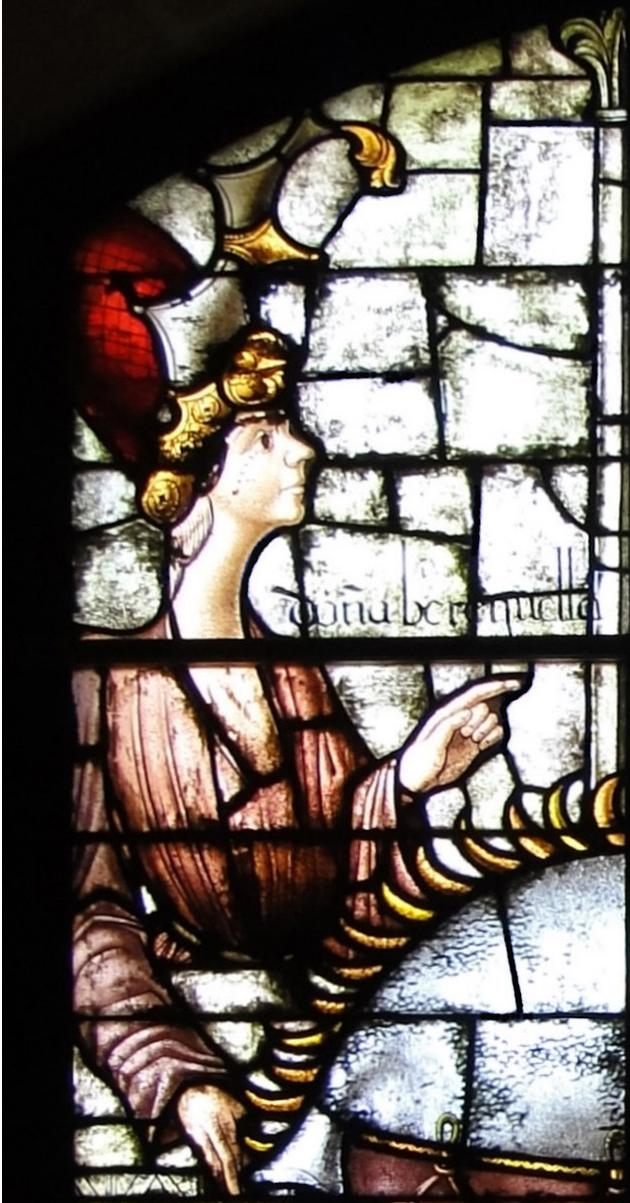 |
Doña Berengaria from a stained
glass window in the Alcazar
via Wikimedia Commons
|
Several years later, Berengaria's parents arranged for her to marry her cousin King Alfonso IX of Leon. The church had already forced him to leave his first wife, another cousin, because they were too closely related. He and Berengaria persisted, however, staying together for seven years after the Pope placed them under interdict. This was more for political reasons than romantic ones: their marriage had finally brought peace to the neighboring kingdoms. Their separation reignited hostilities. They were not the world's happiest divorced couple.
Berengaria took their five children back to Castile with her. When her father died and her underaged brother was killed by a falling roof tile, Berengaria became Queen of Castile. She soon positioned her son, Ferdinand, to take the throne of Castile and abdicated in his favor, remaining his most important advisor. One of her chief goals was to get his father's throne for him, too. Alfonso had other ideas. He decided to settle his kingdom on his daughters from his first marriage. Berengaria blocked these plans from every angle. When he tried to marry one of these daughters to a powerful prince who could support her claim, Berengaria persuaded the prince to marry one of her daughters instead. Then, she basically bought off her former stepdaughters, promising them money for life if they would cede their rights to their younger half-brother. When their father died, Ferdinand III became king of Castile and king of Leon. The thrones would remain united from thenceforth and were eventually merged with the other Spanish kingdoms over the centuries.
Spain, in essence, got its start because of the sheer determination of Berengaria.
For more about Berengaria:
Berengaria of Castile on Royal Women
Berenguela of Castile on About.com
Books about Berengaria:
No comments:
Post a Comment